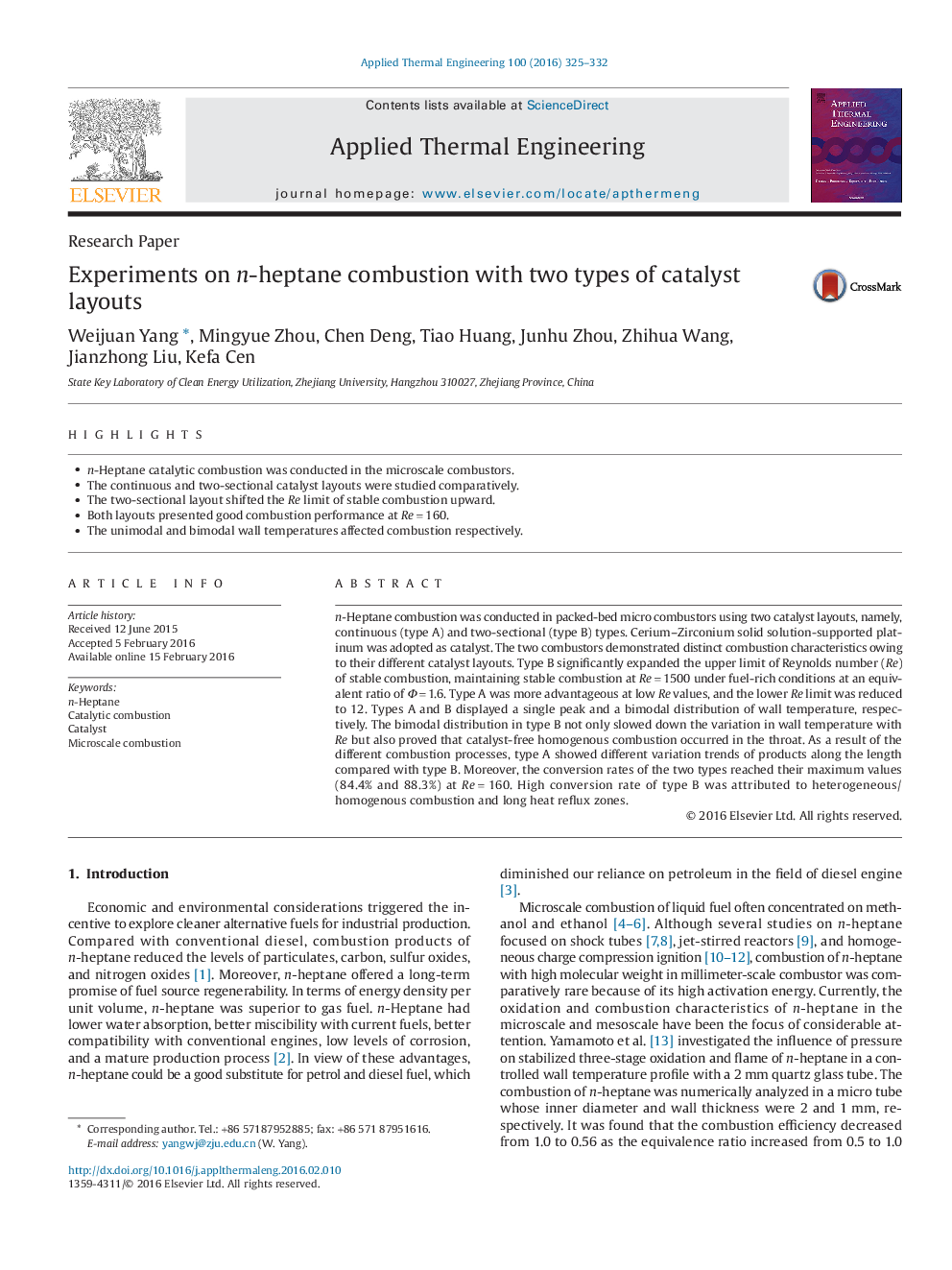| Article ID | Journal | Published Year | Pages | File Type |
|---|---|---|---|---|
| 644870 | Applied Thermal Engineering | 2016 | 8 Pages |
•n-Heptane catalytic combustion was conducted in the microscale combustors.•The continuous and two-sectional catalyst layouts were studied comparatively.•The two-sectional layout shifted the Re limit of stable combustion upward.•Both layouts presented good combustion performance at Re = 160.•The unimodal and bimodal wall temperatures affected combustion respectively.
n-Heptane combustion was conducted in packed-bed micro combustors using two catalyst layouts, namely, continuous (type A) and two-sectional (type B) types. Cerium–Zirconium solid solution-supported platinum was adopted as catalyst. The two combustors demonstrated distinct combustion characteristics owing to their different catalyst layouts. Type B significantly expanded the upper limit of Reynolds number (Re) of stable combustion, maintaining stable combustion at Re = 1500 under fuel-rich conditions at an equivalent ratio of Φ = 1.6. Type A was more advantageous at low Re values, and the lower Re limit was reduced to 12. Types A and B displayed a single peak and a bimodal distribution of wall temperature, respectively. The bimodal distribution in type B not only slowed down the variation in wall temperature with Re but also proved that catalyst-free homogenous combustion occurred in the throat. As a result of the different combustion processes, type A showed different variation trends of products along the length compared with type B. Moreover, the conversion rates of the two types reached their maximum values (84.4% and 88.3%) at Re = 160. High conversion rate of type B was attributed to heterogeneous/homogenous combustion and long heat reflux zones.
